Article by Reiki Master Supriya Nair
The ‘Ray’ in Reiki
“You are light! You may get reflected, deflected,
at times dimmed and dark,
but that’s what you are at the end…
Your innate nature is to shine and bring light.”
Have you ever noticed that there are many terms in Reiki that contain the character Rei? Apart from being the first character in Rei-ki (spiritually guided life force) itself, Rei also forms the part of many other Reiki terms –
- Rei-ju (attunement/ empowerment/ blessing)
- Rei-ji Ho (indication of the Reiki energy technique)
- Byosen Reikan Ho (scanning technique)
- Cho-Ku-Rei (power symbol)
- Hatsu Rei Ho (a meditation combining a minor empowerment and self-healing intended to enhance the flow of Reiki energy).
In Chinese, Rei is termed as Ling and is understood as the Creative Force that is of the highest order. It is the supreme energy that has a high frequency. In fact, Ki (Earth spirit or energy) has a much lower energy frequency than Rei. The Chinese call the person with a strong Ling, ‘Shen Ling’, a spiritually realized human being. In Buddhism, such beings are called ‘Bodhisattva.’ Shen Ling can astral travel with their spirit body and they help rescue lost souls from the astral world. They appear in people’s dreams as healers and teachers and performing benevolent tasks.
Reiki practitioners are the lightworkers that carry the flame and help people probe into their shadows to find their light while the Earth shifts to higher consciousness. Their main task is to bring power into this world, intended to synchronize nature and human beings and create harmony between the spiritual and material worlds. Latin expresses this quite beautifully in the words ‘ora et labora’ which means ‘pray and work’ indicating how we are a channel between the higher realms and Earth.
Reiki is a creative energy through which a “ray” of light (Rei) is breathed into the grain of rice (dormant energy) giving rise to a new life (Ki). Read more on this in Unveiling Reiki: Reiki Kanji and Its Evolution (Part 1). By channelling this creative energy received from the higher realms for our self and others, we are contributing to the expansion of the collective consciousness. Access to these realms can be gained through a process of initiation or attunement called Rei-ju. It involves the awakening of our spiritual faculty of intuition (Rei-ji Ho) so as to enable the practitioner to discern the energetic imbalances in a person’s body or aura (Byosen Reikan Ho). This is done by using symbols like Cho-Ku-Rei, which acts like a magic wand to switch on the Reiki powers of the practitioner. However, all these are only the by-product of the practice. The true essence of Reiki is engaging in self-realization, the discovery of the ultimate truth about our Self (Hatsu Rei Ho).
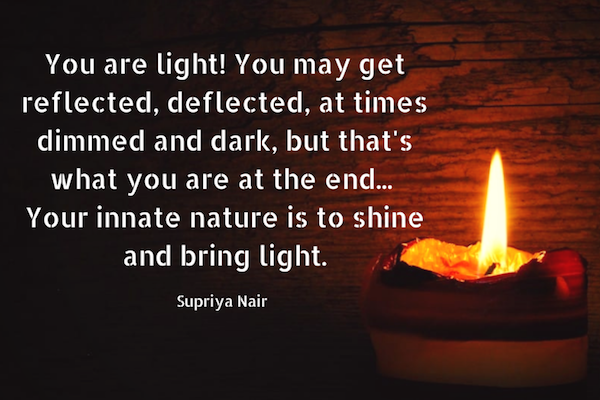
The ‘Key’ in Reiki
Has it ever happened that you have met an unknown person and suddenly felt lively and excited? Or, have you visited a place for the first time and felt gloomy and a sudden drop in your energy? Have you observed or felt the ‘energy’ around people and places without even having to know about them?
It is not just people and places that we pick up energy from. We mop up energy from what we eat and drink as well. This is why a healthy diet and eating food that is as close to its source as possible is so crucial.
What is this ‘Energy’?
Every culture across the globe has the idea of a non-physical life-giving force or energy that animates everything in the Universe. The Japanese call this energy as Ki. The Taoists call this energy Chi or Qi which flow through channels called meridians in Acupuncture. Indian yogis call it Prana which flows through nadis and chakras in Ayurveda and is used in the meditative breathing exercises called Pranayama. This energy is known as Mana in Polynesia, Ti in Hawaiian, and Ruach Adonai or Ruach Hakkodesh in Hebrew. In Islamic cultures, it is called Baraka, while Christians refer to it as the Holy Trinity. Shamans in all cultures use this energy for divination, psychic awareness, manifestation, and healing. Science calls it Biofield Energy. Russian researcher Semyon Davidovich Kirlian developed a method in 1940’s for photographing the field of this life energy surrounding living beings.
Ki or Energy was first written about in a Chinese document, Huang Ti Nei Ching Su Wen, also called “The Yellow Emperor’s Classic of Internal Medicine.” In the Yellow Emperor’s Classic, Ki is described as the omnipresent, universal life energy or vital life force that nourishes and sustains all life forms.
Ki in Health and Disease
The frequency of Ki is normally around 250 cycles per second (cps) in humans. However, after each level of Reiki attunement, it raises from 400 to 800 cps. Some dedicated yogis and mystics report frequencies more than 900 cps (Penelope Quest, 2002).
In Rei-Ki practice, great emphasis is placed on the well-being of an individual based upon the flow of Ki. Unrestricted flow of Ki in the body allows one to remain healthy, while its diminished flow makes us more vulnerable to illness. Any area where Ki is constricted, out of balance, or not flowing, can be affected by dis-ease. Also, seeking harmony between opposing energies, such as order and disorder, activity and passivity, positive and negative, masculine and feminine is an important aspect for the healthy flow of Ki and helps cultivate balance in everyday life, and enhances a feeling of wellbeing.
The Yellow Emperor’s Classic of Internal Medicine lists more than 30 different types of Ki. Genki (natural/healthy Ki), Byoki (unhealthy/negative Ki), Ki no hayai (excitement), Ki ga shimazu (disappointment), Ki ga omoi (depression), Ki no okii (generosity), are some of the ways Ki expresses.
Ki is guided by the Mind (Intention)
Ki is the primary energy of not only our physical body but also behind our emotions, thoughts, and spirit. When we are physically ill, our ability to think and work is hampered. Conversely, when we are clouded by intense negative emotions of anger, sadness, depression, etc., we feel physically exhausted and burned out. This is because Ki is influenced by the mind. Unhealthy negative thoughts lead to weak and unhealthy Ki (Byoki), while positive and uplifting thoughts lead to a stronger Ki (Genki). Apart from physical and mental ailments, the creation of Byoki can have an adverse effect on our learning ability, relationships, and career. “The real challenge is not to think right but to control our thoughts!”
Rei-Ki emphasizes the importance of a healthy flow of Ki, as well as cultivating a balanced state of well-being and health. It heals by flowing into a person’s energy field, locating areas of Byoki, and replacing it by Genki. In this way, Rei-Ki can be used to heal and improve any area of one’s life that is not functioning in a healthy way.
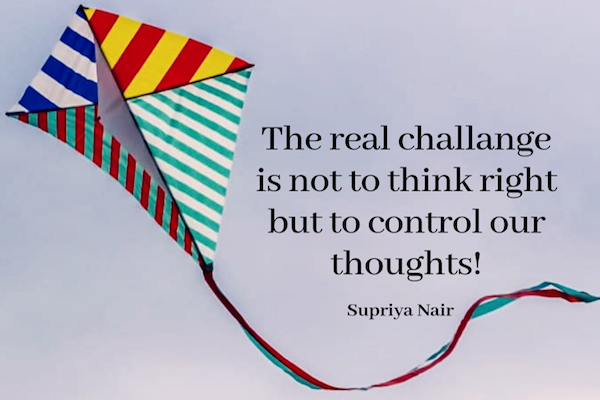
Birth of Biofield
Biofield is an emerging field of scientific study that aims to provide a scientific foundation for understanding the concept of ‘vital energy,’ ‘subtle energy,’ ‘Chi,’ ‘Ki,’ ‘Qi’ that energetic therapies like Reiki, Therapeutic Touch (TT), Healing Tough (HT), Johrei, Pranic healing, Qigong proclaim.
In science, the idea of vitalism, which believes in living organisms containing some non-physical element or life force (vital force), dates back to the works of anatomist, Francis Glisson (1597–1677), Dr. Marcello Malpighi (1628–1694) and the father of epigenesis in embryology, Caspar Friedrich Wolff (1733–1794). The concept of a ‘biological field’ first arose in embryology as Alexander Gurwitsch coined the term ‘morphogenetic field’ in 1910 to describe the auto-pilot process of a developing embryo and biological regeneration. It was subsequently proposed that the biological field was a holistic property of the entire organism. However, the scientific basis of the concept was still undetermined. At the same time, several evidence from cell biology and biophysics point to the electromagnetic and other types of fields that play an active role in numerous homeodynamic processes, development, and tissue repair
Many Complementary and Alternative Medicine (CAM) practitioners continue to use terms from non-scientific explanatory models and medical systems to evoke a vital force or universal life energy (Ki). “Laying-on of hands” is one of the oldest forms of healing which engages the vital force. Hippocrates, the father of modern Western medicine, referred to it as “the force which flows from many people’s hands.”
Intrigued by the variable terminologies and explanatory models that reflected the same underlying ‘energy,’ a committee constituted by the US National Institutes of Health (NIH) sought to bring unity to the diversity of energetic practices by creating a common term that would be amenable to the scientific and broader healthcare communities. In 1992, the panel of NIH scientists chose the word “biofield” or biological field and defined it as “a massless field, not necessarily electromagnetic, that surrounds and permeates living bodies and affects the body.” The term also found its way as a Medical Subject Heading (MeSH term) at the National Library of Medicine.
According to NIH, “biofield therapies are defined as noninvasive, practitioner-mediated therapies that explicitly work with the biofield of both the practitioner and client to stimulate a healing response in the client”. Biofield therapies such as TT are recognized in the Nursing Intervention Classification Code and are recognized by some state licensure boards as within the scope of nursing practice.
“When you take everything with a pinch of salt, you cannot think anything outside the box”. Biofield is now a part of many scientific studies. It is also the basis of electrocardiography (ECG/ EKG), electroencephalography (EEG) and electromyography (EMG). Furthermore, biofield is also serving as a connection between mind-body interactions which is fundamental to mind-body medicine.
Free eBook download: We’ve created an eBook with our best articles on this topic, and offer it for free to all our newsletter subscribers.
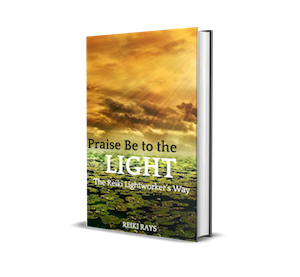
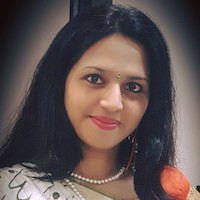
Supriya Nair
Dr. Supriya Nair, IMD, PhD has been a Reiki and Kriya Yoga practitioner since 2008. A conduit between the scientific and spiritual worlds, Dr. Supriya has a profound fascination for the healing arts. Apart from holding the title of Usui Reiki Master Teacher, Dr. Supriya is a certified Health Coach and proficient in various integrative medicine modalities. She is also the author of "Train Your Brain to Unchain Your Pain."
To get in touch with Dr. Supriya, you can reach out via email at [email protected] or connect with her on Facebook at facebook.com/supriyanair111 and on Instagram at instagram.com/proconscious.cafe.

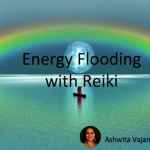

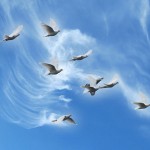
Extraordinary thoughtsss with neww insightss of Rei-ki … 👐
Thanks dear
“You are light ✨ so is reiki “ Beautifully described
Thanks dear
Very informative article, Supriya. Nice.
Thanks Naveeta
please can you put the link to the first (and others) part(s), if any. Thank you.
Link to the first part – https://reikirays.com/72594/unveiling-reiki-reiki-kanji-and-its-evolution-part-1/
Next part of ‘Unveiling Reiki’ will be published next week. Thank you.
Link to the next part – https://reikirays.com/72598/unveiling-reiki-the-trinity-and-non-duality-in-reiki-part-3/
Again thank you Supriya.
Loving wisdom.
Gratitude